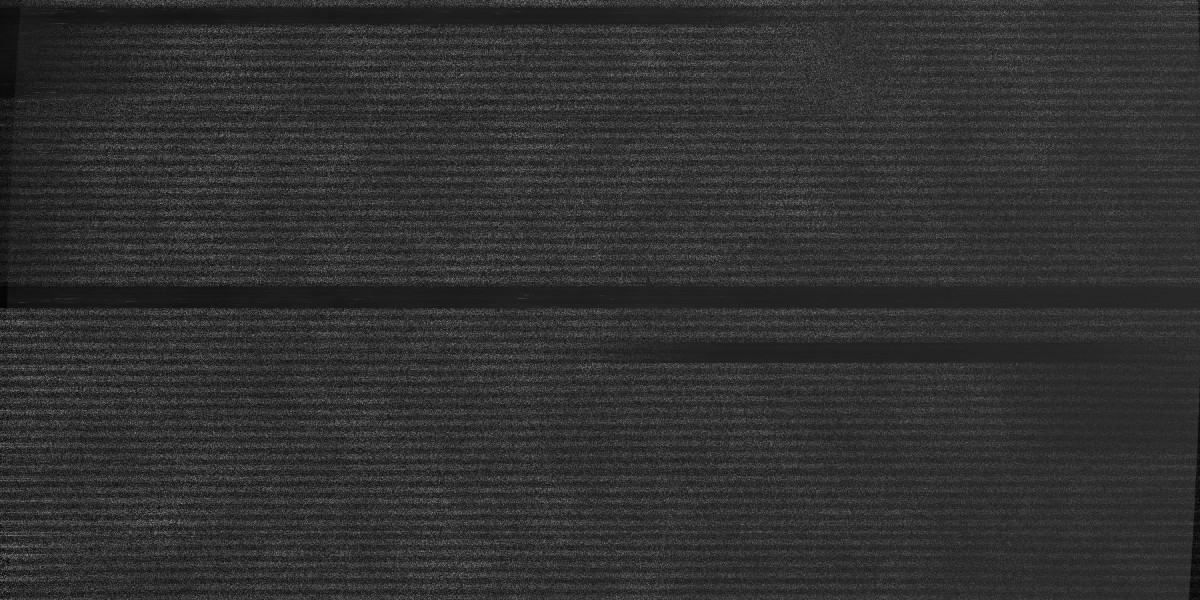
A home equity line of credit (HELOC) is a protected loan connected to your home that enables you to access cash as you need it. You'll have the ability to make as many purchases as you 'd like, as long as they don't surpass your credit limit. But unlike a credit card, you risk foreclosure if you can't make your payments since HELOCs use your house as collateral.
Key takeaways about HELOCs
- You can utilize a HELOC to gain access to money that can be used for any function.
- You could lose your home if you fail to make your HELOC's regular monthly payments.
- HELOCs normally have lower rates than home equity loans but higher rates than cash-out refinances.
- HELOC interest rates are variable and will likely alter over the duration of your payment.
- You might be able to make low, interest-only regular monthly payments while you're drawing on the line of credit. However, you'll need to start making complete principal-and-interest payments as soon as you go into the payment duration.

Benefits of a HELOC
Money is easy to use. You can access money when you require it, for the most part simply by swiping a card.
Reusable credit line. You can settle the balance and recycle the credit line as lot of times as you 'd like throughout the draw duration, which generally lasts several years.
Interest accrues only based on usage. Your regular monthly payments are based just on the quantity you have actually utilized, which isn't how loans with a lump amount payment work.
Competitive interest rates. You'll likely pay a lower interest rate than a home equity loan, personal loan or credit card can provide, and your lending institution might offer a low initial rate for the very first 6 months. Plus, your rate will have a cap and can only go so high, no matter what happens in the more comprehensive market.
Low regular monthly payments. You can usually make low, interest-only payments for a set time duration if your lender provides that option.
Tax advantages. You might have the ability to compose off your interest at tax time if your HELOC funds are used for home enhancements.
No mortgage insurance. You can avoid personal mortgage insurance (PMI), even if you finance more than 80% of your home's value.
Disadvantages of a HELOC
Your home is collateral. You might lose your home if you can't keep up with your payments.
Tough credit requirements. You may need a greater minimum credit rating to qualify than you would for a basic purchase mortgage or re-finance.
Higher rates than very first mortgages. HELOC rates are higher than cash-out re-finance rates since they're second mortgages.
Changing interest rates. Unlike a home equity loan, HELOC rates are usually variable, which suggests your payments will alter gradually.

Unpredictable payments. Your payments can increase gradually when you have a variable interest rate, so they might be much higher than you anticipated when you get in the repayment period.
Closing costs. You'll generally have to pay HELOC closing expenses varying from 2% to 5% of the HELOC's limitation.
Fees. You might have monthly maintenance and subscription costs, and might be charged a prepayment charge if you attempt to close out the loan early.
Potential balloon payment. You might have a large balloon payment due after the interest-only draw period ends.
Sudden payment. You might have to pay the loan back in complete if you offer your house.
HELOC requirements
To receive a HELOC, you'll need to provide monetary files, like W-2s and bank declarations - these permit the lender to confirm your earnings, possessions, work and credit ratings. You need to expect to fulfill the following HELOC loan requirements:
Minimum 620 credit report. You'll need a minimum 620 score, though the most competitive rates generally go to customers with 780 ratings or greater.
Debt-to-income (DTI) ratio under 43%. Your DTI is your total debt (including your housing payments) divided by your gross regular monthly income. Typically, your DTI ratio shouldn't go beyond 43% for a HELOC, however some lending institutions might extend the limitation to 50%.
Loan-to-value (LTV) ratio under 85%. Your lender will buy a home appraisal and compare your home's worth to just how much you wish to borrow to get your LTV ratio. Lenders normally enable a max LTV ratio of 85%.
Can I get a HELOC with bad credit?
It's not easy to find a lender who'll use you a HELOC when you have a credit score below 680. If your credit isn't up to snuff, it may be sensible to put the concept of taking out a brand-new loan on hold and focus on repairing your credit initially.
How much can you borrow with a home equity credit line?
Your LTV ratio is a big consider just how much cash you can obtain with a home equity credit line. The LTV borrowing limit that your lender sets based on your home's evaluated worth is typically capped at 85%. For example, if your home deserves $300,000, then the combined overall of your present mortgage and the new HELOC amount can't go beyond $255,000. Remember that some lenders may set lower or greater home equity LTV ratio limits.
Is getting a HELOC a good concept for me?
A HELOC can be a great idea if you need a more inexpensive method to spend for expensive tasks or financial requirements. It may make good sense to secure a HELOC if:
You're preparing smaller sized home enhancement jobs. You can draw on your credit line for home restorations with time, rather of spending for them all at when.
You need a cushion for medical costs. A HELOC offers you an option to diminishing your cash reserves for all of a sudden significant medical bills.
You need assistance covering the expenses related to running a little service or side hustle. We know you need to invest cash to generate income, and a HELOC can assist pay for expenditures like inventory or gas money.
You're included in fix-and-flip property endeavors. Buying and fixing up an investment residential or commercial property can drain pipes cash quickly; a HELOC leaves you with more capital to purchase other residential or commercial properties or invest elsewhere.
You need to bridge the gap in variable earnings. A line of credit gives you a monetary cushion throughout sudden drops in commissions or self-employed earnings.
But a HELOC isn't an excellent concept if you do not have a solid financial strategy to repay it. Although a HELOC can give you access to capital when you require it, you still require to think of the nature of your task. Will it improve your home's worth or otherwise supply you with a return? If it doesn't, will you still be able to make your home equity credit line payments?
Ready to get personalized rates from top lenders on LendingTree?
Get Quotes
What to search for in a home equity line of credit
Term lengths that work for you. Look for a loan with draw and payment periods that fit your needs. HELOC draw periods can last anywhere from 5 to ten years, while payment durations generally range from 10 to 20 years.
A low interest rate. It's vital to look around for the most affordable HELOC rates, which can conserve you thousands over the life of your home equity credit line. Apply with 3 to 5 lenders and compare the disclosure files they offer you.

Understand the extra costs. HELOCs can feature extra costs you might not be expecting. Watch out for maintenance, lack of exercise, early closure or transaction fees.
Initial draw requirements. Some lenders require you to withdraw a minimum amount of cash instantly upon opening the line of credit. This can be fine for borrowers who require funds urgently, however it forces you to begin accruing interest charges right away, even if the funds are not instantly needed.

Compare offers from top HELOC loan providers
Best For:
Large HELOC loans
Best For:
Fast HELOC closing
Best For:
No HELOC closing expenses
Best For:
High-LTV HELOCs
Best For:
Fixed-rate HELOCs
Get Rates
+ More Options
Just how much does a HELOC cost each month?
HELOCS typically have variable rates of interest, which means your rates of interest can alter (or "adjust") monthly. Additionally, if you're making interest-only payments during the draw period, your regular monthly payment amount may leap up drastically once you enter the repayment period. It's not uncommon for a HELOC's month-to-month payment to double as soon as the draw period ends.

Here's a general breakdown:
During the draw period:
If you have drawn $50,000 at an annual rate of interest of 8.6%, your month-to-month payment depends upon whether you are just paying interest or if you decide to pay towards your principal loan:
If you're making principal-and-interest payments, your monthly payment would be roughly $437. The payments throughout this period are determined by just how much you've drawn and your loan's amortization schedule.
If you're making interest-only payments, your month-to-month interest payment would be around $358. The payments are figured out by the rates of interest used to the impressive balance you have actually drawn versus the credit line.
During the payment duration:
If you have a $75,000 balance at a 6.8% rates of interest, and a 20-year payment duration, your regular monthly payment throughout the repayment duration would be roughly $655. When the HELOC draw duration has ended, you'll enter the repayment duration and should begin paying back both the principal and the interest for your HELOC loan.
Don't forget to budget plan for fees. Your monthly HELOC cost might also include yearly costs or transaction fees, depending on the loan provider's terms. These fees would contribute to the general cost of the HELOC.
What is the monthly payment on a $100,000 HELOC?

Assuming a debtor who has invested approximately their HELOC credit limitation, the month-to-month payment on a $100,000 HELOC at today's rates would have to do with $635 for an interest-only payment, or $813 for a principal-and-interest payment.
But, if you have not utilized the full quantity of the line of credit, your payments could be lower. With a HELOC, much like with a credit card, you just need to pay on the money you have actually utilized.
HELOC interest rates
HELOC rates have been falling given that the summer of 2024. The exact rate you get on a HELOC will differ from lender to lending institution and based on your personal financial scenario.
HELOC rates, like all mortgage interest rates, are reasonably high today compared to where they sat before the pandemic. However, HELOC rates do not necessarily relocate the same direction that mortgage rates do because they're directly connected to a standard called the prime rate. That said, when the federal funds rate rises or falls, both the prime rate and HELOC rates tend to follow.
Can I get a fixed-rate HELOC?
Fixed-rate HELOCs are possible, but they're less common. They let you convert part of your line of credit to a fixed rate. You will continue to utilize your credit as-needed much like with any HELOC or charge card, but securing your repaired rate safeguards you from potentially pricey market modifications for a set quantity of time.
How to get a HELOC
Getting a HELOC resembles getting a mortgage or any other loan secured by your home. You need to offer information about yourself (and any co-borrowers) and your home.
Step 1. Ensure a HELOC is the ideal move for you
HELOCs are best when you require big quantities of money on an ongoing basis, like when spending for home enhancement jobs or medical costs. If you're uncertain what alternative is best for you, compare different loan alternatives, such as a cash-out re-finance or home equity loan
But whatever you pick, make certain you have a strategy to pay back the HELOC.
Step 2. Gather documents
Provide lenders with paperwork about your home, your financial resources - including your earnings and work status - and any other financial obligation you're carrying.
Step 3. Apply to HELOC lending institutions
Apply with a few lenders and compare what they offer relating to rates, fees, optimum loan quantities and payment durations. It doesn't injure your credit to use with several HELOC lenders anymore than to apply with simply one as long as you do the applications within a 45-day window.
Step 4. Compare deals
Take an important take a look at the offers on your plate. Consider total expenses, the length of the phases and any minimums and maximums.
Step 5. Close on your HELOC
If everything looks great and a home equity credit line is the right relocation, sign on the dotted line! Make certain you can cover the closing expenses, which can range from 2% to 5% of the HELOC's credit limit quantity.
Compare customized rate deals on your HELOC loan today.
Get Quotes
Which is better: a HELOC or a home equity loan?
A home equity loan is another 2nd mortgage alternative that enables you to tap your home equity. Instead of a credit limit, though, you'll get an in advance lump sum and make set payments in equal installments for the life of the loan. Since you can typically borrow roughly the very same amount of money with both loan types, selecting a home equity loan versus HELOC might depend largely on whether you want a fixed or variable interest rate and how frequently you desire to gain access to funds.
A home equity loan is excellent when you require a large amount of cash upfront and you like repaired month-to-month payments, while a HELOC might work better if you have ongoing costs.
$ 100,000 HELOC vs home equity loan: regular monthly expenses and terms
Here's an example of how a HELOC might stack up versus a home equity loan in today's market. The rates offered are examples selected to be representative of the existing market. Bear in mind that interest rates change everyday and depend in part on your financial profile.
HELOCHome equity loan.
Interest rateVariable, with an introductory rate of 6.90% Fixed at 7.93%.
Interest-only payment (draw duration just)$ 575N/A.
Principal-and-interest payment at least expensive possible rate of interest For the functions of this example, the HELOC includes a 5% rate flooring. $660$ 832.
Principal-and-interest payment at greatest possible interest rate For the functions of this example, the HELOC features a 5% rate of interest cap, which sets a limit on how high your rate can increase at any time during the loan term. $1,094$ 832
Other methods to cash out your home equity
If a HELOC or home equity loan will not work for you, there are other ways you can access your home equity:
Squander refinance.
Personal loan.
Reverse mortgage
Cash-out refinance vs. HELOC
A cash-out re-finance replaces your current mortgage with a bigger loan, enabling you to "squander" the distinction between the two quantities. The optimum LTV ratio for many cash-out refinance programs is 80% - nevertheless, the VA cash-out re-finance program is an exception, enabling military borrowers to tap up to 90% of their home's worth with a loan backed by the U.S. Department of Veterans Affairs (VA).
Cash-out re-finance rate of interest are typically lower than HELOC rates.
Which is much better: a HELOC or a cash-out refinance?
A cash-out refinance might be much better if changing the regards to your current mortgage will benefit you economically. However, since rate of interest are currently high, right now it's unlikely that you'll get a rate lower than the one attached to your original mortgage.
A home equity credit line may make more sense for you if you wish to leave your original mortgage untouched, however in exchange you'll typically have to pay a greater rate of interest and likely likewise have to accept a variable rate. For a more in-depth contrast of your options for tapping home equity, have a look at our article comparing a cash-out re-finance versus HELOC versus home equity loan.
HELOC vs. Personal loan
A personal loan isn't protected by any security and is offered through private lenders. Personal loan repayment terms are usually shorter, however the interest rates are greater than HELOCs.
Is a HELOC much better than an individual loan?
If you wish to pay as little interest as possible, a HELOC might be your best choice. However, if you don't feel comfy tying new debt to your home, a personal loan might be better for you. HELOCs are secured by your home equity, so if you can't keep up with your payments, your lender can use foreclosure to take your home. For an individual loan, your creditor can't seize any of your personal residential or commercial property without litigating first, and even then there's no assurance they'll be able to take your residential or commercial property.
HELOC vs. reverse mortgage
A reverse mortgage is another method to convert home equity into cash that permits you to avoid selling the home or making additional mortgage payments. It's only offered to homeowners aged 62 or older, and a reverse mortgage loan is usually repaid when the customer vacates, sells the home, or dies.
Which is better: a HELOC or a reverse mortgage?
A reverse mortgage may be much better if you're a senior who is unable to get approved for a HELOC due to limited income or who can't take on an extra mortgage payment. However, a HELOC might be the superior option if you're under age 62 or don't prepare to stay in your existing home permanently.



